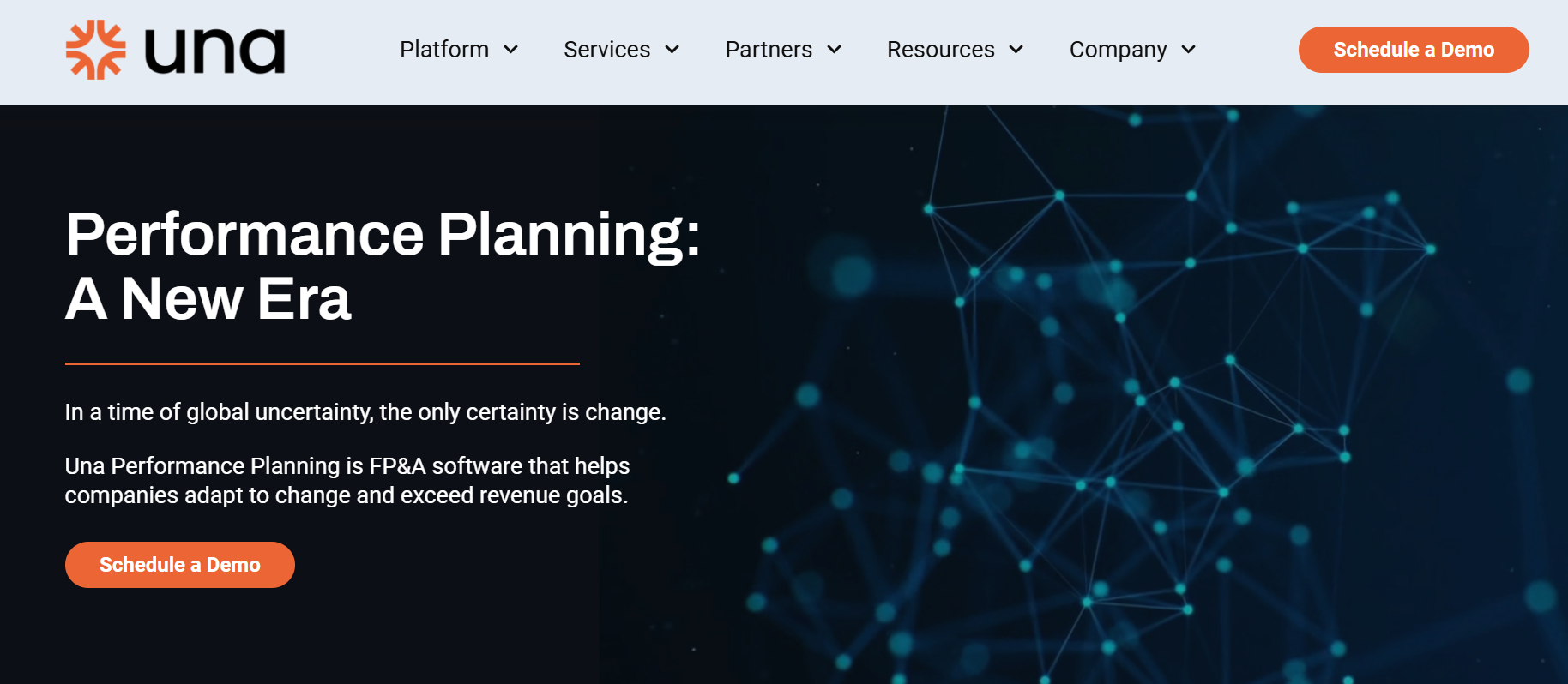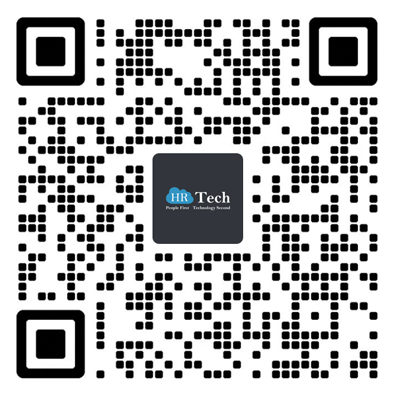-
 资讯
资讯
未来招聘:2025年7大人才招聘战略
重要启示
未来 10 年,美国经济将增加近 700 万个工作岗位。
在取得积极成果方面,传统招聘方法的效果越来越差。
2025 年,灵活性和创新性是人才招聘成功的两个最关键因素。
进入 2025 年,人才招聘(TA)专业人员面临着越来越复杂的招聘形势。求职者偏好的变化、技术的进步以及竞争激烈的人才市场都大大提高了风险。
美国劳工统计局(BLS)预计,从 2023 年到 2033 年,美国经济将新增 670 万个工作岗位,年增长率为 0.4%。根据美国劳工统计局的预测,医疗保健和社会援助行业将增长最快,技术和商业服务行业将紧随其后。
众所周知,传统的招聘方法已无法达到预期效果,招聘人员发现他们必须不断调整以吸引高质量的求职者。为了保持领先地位,他们需要优先考虑员工体验,利用新技术,并采取灵活、前瞻性的策略。
在此,让我们探讨七大策略,帮助招聘专家适应不断变化的就业市场,利用新技术,打造敏捷团队,并将公司定位为 2025 年的首选雇主。
1. 拥抱灵活的人才解决方案
大流行病极大地加速了向远程工作和自由职业模式的转变,从根本上改变了工作的性质。截至 2023 年 8 月,12.2% 的美国工人完全是远程工作,470 多万人至少有一半时间是远程工作。预计到 2025 年,将有 3260 万美国人(近 20%)从事虚拟工作。
如今,灵活的人才解决方案已不再是一种选择,而是一种必需。随着 “打工经济 ”的蓬勃发展,越来越多的工人开始寻求自由职业或合同制工作,以获得更大的自主权和工作与生活的平衡。
企业应通过实施可扩展的劳动力解决方案,兼顾全职员工和按需人才,充分利用这一转变。这种混合方法使企业能够根据当前需求扩展员工队伍,降低管理成本,同时保持对专业技能的获取。例如,企业可以使用远程或自由职业者来完成短期项目或应对季节性高峰,同时保留核心团队以保持长期稳定性。
招聘营销人员应展示这些解决方案,以便更好地满足企业需求,同时为求职者提供所需的灵活性。
2. 在招聘中利用人工智能和高级分析技术
人工智能(AI)和高级分析正在改变招聘流程,使招聘专业人员能够做出更明智、更快速的决策。人工智能驱动的工具可简化候选人筛选、将申请人与职位要求相匹配并进行初步面试。这些技术节省了时间,减少了人为偏见,使招聘人员能够专注于与候选人建立关系等高价值活动。
在招聘中应用人工智能时,法律和道德方面的考虑至关重要。招聘专家必须确保人工智能算法的透明度,避免强化现有的偏见。通过谨慎平衡创新与道德实践,招聘人员可以利用人工智能的力量提高招聘结果,同时维护招聘流程的公平性。
预测分析可根据历史数据和市场趋势预测未来的人才需求,从而加强劳动力规划。这有助于企业发现潜在的技能差距,优化招聘预算,并战略性地将人才招聘工作与长期业务目标相结合。
3. 优先考虑基于技能的招聘
学历和资历曾经是潜在求职者的 “决定性因素”,但随着企业转向技能型招聘,对学历和资历的传统强调正在逐渐消失。TA 专业人员越来越多地超越正规教育要求,而注重与职位相符的实用技能。这种方法提供了一个更广泛、更多元化的人才库,让企业有机会接触到以前可能因非传统背景而被忽视的求职者。
将技能评估、实践测试和工作模拟融入招聘流程,可让雇主根据应聘者执行特定任务的能力对其进行评估。它减少了对冗长的求职面试的依赖,因为面试往往无法评估求职者的能力。
4. 以价值观为重点,培育强大的雇主品牌
如今的求职者,尤其是千禧一代和 Z 世代,比上一代人更重视公司的价值观、文化和社会影响。因此,企业有必要培育一个强大的雇主品牌,以反映这些优先事项。
可持续发展、社会责任和企业道德是求职者关注的关键领域。招聘营销专业人员应强调公司在这些领域所做的努力,以吸引那些优先考虑目标驱动型工作的求职者。突出展示环境管理、多样性、包容性或社区参与等方面的举措,可以使公司从竞争对手中脱颖而出。
5. 实施创新的员工推荐计划
员工推荐计划(ERP)是快速利用现有网络并找到优质候选人的高效方法。据《福布斯》报道
82%的雇主使用员工推荐来寻找候选人
88% 的雇主表示,通过员工推荐寻找候选人的投资回报率最高
被推荐的求职者从申请到被聘用的转化率最高
企业资源规划充分利用了社交媒体和专业网络的力量。招聘专业人员可以利用数字技术设计创造性的激励计划。这些计划鼓励员工从个人网络中推荐优秀人才,将员工队伍变成招聘引擎。
为了不断优化企业资源规划战略,企业可以利用先进的跟踪工具将推荐计划游戏化,以衡量其有效性。
企业还应考虑利用新员工网络来寻找新鲜人才。新员工通常会与具有相似技能和价值观的专业人士建立联系,从而为潜在候选人提供宝贵的人才库。对新员工的推荐进行激励,可以进一步扩大公司的人才覆盖面。
6. 提供有竞争力、灵活的全面奖励方案
随着求职者将工作与生活的平衡、个人成长和精神健康放在首位,仅靠有竞争力的薪酬已不足以吸引优质人才。奖励方案必须与时俱进,以满足多代员工的不同需求。眼光独到的求职者会寻求薪酬、福利和工作生活奖励的组合。
定期的市场分析可确保薪酬方案保持竞争力,然而,除了基本工资外,公司还应提供灵活、可定制的福利,允许员工根据自身情况进行选择。这些福利可能包括心理健康支持、健康计划、远程工作津贴和职业发展机会。
提供灵活的工作安排,如压缩工作周或无限制休假政策,可以使公司对寻求更大职业自主权的求职者更具吸引力。
7. 将人才招聘与整体业务战略相结合
招聘不再是一项独立的职能,而是组织战略不可分割的一部分。2025 年,企业应将人才招聘工作与更广泛的业务目标相结合。招聘专业人员应与高层领导密切合作,确保招聘实践支持长期目标,促进创新、增长和应变能力。
这种协调包括定期审查招聘战略,确保其与不断变化的业务需求相关联。举例来说: 如果公司计划拓展新市场或开发新产品线,其招聘工作就应积极主动地将重点放在寻找具备必要技能的人才上,以支持这些计划。
领导层的参与对于制定人才招聘战略也至关重要。通过促进 TA 团队与公司高管之间的坦诚沟通,招聘专业人员可以更好地理解组织的愿景,并建立一支推动成功的员工队伍。当人才招聘完全融入企业战略时,就会成为实现组织目标的有力工具。
2025 年,灵活性和创新性将成为人才招聘取得成功的最关键因素。随着就业市场的发展和求职者期望的转变,招聘营销专业人员应做好 “调整风帆 ”的准备--调整战略以保持竞争力。
招聘人员可以通过采用灵活的人才解决方案、利用人工智能、优先考虑基于技能的招聘以及培养强大的雇主品牌来吸引和留住优质人才。提供灵活的整体奖励方案、加强员工推荐计划,以及将人才招聘与更广泛的业务目标相结合,将使企业能够建立有弹性的团队,以应对未来的挑战。
-
 资讯
资讯
未来生产力:2025年四大变革预测
我们的工作方式正在以前所未有的速度发生变化。从传统的、以直觉为基础的管理方法到数据驱动的方法,正在发生重大转变。展望 2025 年,数据驱动的洞察力显然将成为有效劳动力管理的基石。以前,有关劳动力生产率和参与度的决策在很大程度上是以主观评估和 “直觉 ”为指导的。依靠直觉的管理者可能无法识别出那些表现不突出或不显眼的高绩效员工,从而导致员工不参与或错失晋升机会。同样,基于一般看法而非可衡量结果的无效绩效考核往往会让员工感到价值被低估或与组织目标不一致。
随着优化绩效和留住顶尖人才的压力与日俱增,企业现在认识到迫切需要客观、基于数据的洞察力,以便更清晰地了解生产率、参与度和员工福利。
这种转变不仅与技术有关,还与赋予组织做出明智决策、提高员工福利和实现可持续增长的能力有关,而所有这些在应对管理混合型和远程工作团队的复杂性方面正变得越来越重要。以下是最具变革性的生产力转变,以及新兴工作场所趋势如何推动数据驱动型生产力管理的发展。
员工生产力解决方案占据中心位置
仅凭直觉决定生产率的时代已经一去不复返了。当今的竞争格局需要一种更加精确和积极主动的方法。领先的企业正在采用先进的分析和生产力解决方案,以便更深入地了解员工如何、何时、何地最有效率。
例如,有些人在远程环境中工作效率更高,而有些人则在办公室环境中茁壮成长。有了客观的数据,企业就能对员工的工作地点做出更明智的决策,从而使员工更加成功,并最终推动企业的发展。有了正确的数据,企业领导者还可以确定一天中哪些时间段的工作效率最高,哪些时间段的会议最多,会议的数量和时间长短对工作效率的影响如何,何时工作量无法控制等。
通过利用数据的力量,企业可以优化工作量、提高保留率、提高产出,并培养一种持续改进的文化。这些解决方案的早期采用者已经从中获益,显示出明显的竞争优势。
组织网络分析(ONA)的崛起: 开启协作
随着远程工作和混合工作对传统协作方式的重塑,领导者开始转向组织网络分析(ONA),以更好地了解团队动态和沟通模式。ONA正在成为一种重要工具,它不仅能将这些新因素可视化,还能让领导者真正了解员工如何在整个组织内相互联系、分享知识和相互支持。
协作指标提供的洞察力远远超出了办公室内的互动。通过绘制沟通模式图,ONA 数据有助于识别作为知识枢纽的关键角色,发现协调和连接团队的个人,并发现可能阻碍进步的孤岛或瓶颈领域。这些指标还能轻松发现潜在的领导者,并凸显可能阻碍员工成长的管理者的无效沟通模式。
以人为本、以数据为中心的协作方法有助于企业加强内部沟通、简化工作流程、创建更敏捷的团队,并全面改善团队的协作方式。
混合工作革命
尽管一些公司在推动回归办公室,但混合工作模式已经证明了其持久的生命力。员工看重的是灵活性,接受这种模式的企业更能吸引和留住顶尖人才。由于许多员工将灵活性视为选择雇主的关键因素,因此很少有公司能够完全强制推行全办公室模式,而不冒人才大量流失的风险。此外,采用混合办公模式不仅能提高员工满意度,还能扩大人才库,让公司从更广泛的地域范围内招聘人才,促进多样性和包容性。
混合办公已成为一种行业标准,企业通过制定政策和采用工具,实现了远程办公和办公室办公之间的无缝过渡。2025 年,我们将继续强调支持远程工作和办公室工作之间的无缝过渡。
赋予员工数据权力
在传统的自上而下的数据处理方式中,只有管理者才能获得绩效指标,而这种方式正在让位于一种更加透明的模式。具有前瞻性思维的公司正在授权员工访问自己的生产力数据,为他们提供有价值的洞察力和发展自主权。这种转变鼓励员工进行自我辅导,使个人目标与组织目标更加一致。当员工感到自己有能力时,他们就会更加投入和积极,从而促进持续改进的文化,让员工感到自己作为成功的积极参与者是有价值的。
前进之路
在我们应对现代工作场所的复杂性时,数据驱动的洞察力为我们提供了一条清晰的前进道路。通过拥抱这些趋势,组织可以:
优化生产力: 深入了解工作模式,做出数据驱动的决策,提高产出。
提高员工参与度: 培养透明、授权和持续改进的文化。
吸引并留住顶尖人才: 通过数据驱动的洞察力,提供灵活性并支持员工发展。
打造具有应变能力的团队: 利用 ONA 了解并加强混合工作环境中的协作。
未来的工作是数据驱动的。通过利用分析的力量和拥抱透明文化,企业可以在 2025 年及以后取得成功。
请记住 这不仅与技术有关,还与人有关。将数据交到员工手中,让他们掌握自己的工作效率,我们就能为每个人创造更加投入、富有成效和充实的工作体验。
-
 资讯
资讯
人瑞人才引入博彦科技成为战略股东,共同探索国内外企业数字化转型升级机遇
2024年12月27日,人瑞人才科技控股有限公司及其附属公司(统称“本集团”,股份代号:6919.HK)欣然宣布,近日通过旧股出售的方式,成功引入全球领先的咨询、行业解决方案及数智技术服务供货商——博彦科技股份有限公司(深交所上市公司,股票代码:002649)成为其战略股东,这次交易共占本集团已发行股份的10%。交易完成后,双方将凭借各自自身优势,共同探索国内外企业数字化转型升级及中国企业出海所带来的业务机遇。
博彦科技于1995年创立,业务覆盖咨询、行业解决方案、数字技术服务、业务运营服务等多个领域,能有效提供由咨询到实施的端到端解决方案。凭借在金融、高科技、互联网、能源、制造、农业等领域的丰富经验,自成立以来已服务众多世界500强及中国500强企业。博彦科技总部位于中国北京,旗下子公司、研发及交付中心已覆盖中国、美国、日本、印度、新加坡、马来西亚、西班牙、哥斯达黎加、菲律宾、巴西、英国、越南等十三个国家的主要城市,全球员工数总超过30,000人。
博彦科技股份有限公司董事长王斌表示:“人瑞人才科技为国内灵活用工的领先企业,随着近年数字化人才需求急增,人瑞人才科技亦于智能制造及汽车、通讯、能源、金融以及科技与互联网等细分市场实现有力增长。这次得以入股人瑞人才,我们相信双方未来将努力达致更高效的资源协同,通过汇聚国内外业务资源,以最新的技术及人才解决方案,共同捕捉中国企业出海、海外业务拓展、全球企业数字化转型升级等领域所带来的蓝海市场。”
人瑞人才科技主席兼行政总裁张建国表示:“很高兴博彦科技能够战略入股公司,随着中资企业出海及国内外企业数字化转型进一步加快,我们亦需要更大的力量去变现市场机遇。博彦科技作为领先的咨询、行业解决方案及数智技术服务供货商,在金融、高科技、互联网、能源、制造、农业等领域都有着丰富的经验,双方的未来合作不但能有效拓宽业务及行业覆盖,其完善的海外布局亦将有助于帮助现有中资大客户对于海外业务拓展的服务需求。相信未来双方将可在国际产品、解决方案等方面探讨进一步的资源融合,为未来财务表现奠下良好基础。”
关于人瑞人才科技控股有限公司
人瑞人才科技是中国领先的一体化人力资源服务及数字技术解决方案提供商,同时亦是多个行业领先企业的战略合作伙伴,专注为客户提供通用服务外包、数字技术与云服务、数字化运营与客服、专业招聘、出海人力资源服务,及其他人力资源解决方案。人瑞人才科技以数字化及创新科技革新传统人力资源业务流程,其一体化生态系统能以效果为导向服务客户,快速高效及大规模地解决现时国内外用工及就业难题。人瑞人才科技目前在国内外开设近100个分子公司,业务覆盖逾300个城市。
-
 资讯
资讯
超自动化浪潮:2025年人类与机器协作时代
在不断发展和竞争激烈的商业环境中,对精确操作和灵活性的需求使超自动化成为最重要的商业促进因素之一,而不仅仅是一种新技术。事实上,在迈向 2025 年甚至更远的未来,超自动化并不是人力资源技术的补充,而是人力资源技术的重生,因此也是人力资源管理的重生。它有助于企业打破传统模式,实现更高的效率、灵活性和创造力。
1. 解码人力资源技术中的超自动化
超自动化超越了自动化,因为它在互联环境中利用了人工智能、ML、RPA、NLP 和分析。它超越了流程自动化的概念,创造了一种类似网络的结构,在这种结构中,程序不断进行微调,行动计划基于预测而非反应,决策是智能的、因地制宜的。
超自动化通过招聘、入职、人才管理、薪资和合规等整体流程,重新设计了员工的工作历程。这不仅能提高组织流程的效率,还能将人力资源的目的与公司更广泛的战略目标相结合。
2. 对人力资源核心职能的战略影响
2.1 彻底改变人才招聘方式
超自动化通过使用算法来分析候选人的资料、进行匹配并选择最佳候选人,从而对人才招聘产生影响。人工智能,特别是基于 NLP 的虚拟助理,有利于与候选人的初次见面,因为它们促进了这一过程并使之个性化。人力资源业务流程外包增强组织决策的另一个领域是人才招聘,组织可以识别潜在员工并评估这些员工在组织中可能取得的成功。
这种复杂程度确保了招聘不再仅仅是填补现有工作岗位的过程,而是获得满足未来组织要求的人力资本的过程。此外,超自动化有助于加快招聘过程,从而为企业在相关市场领域获得最佳人才做好准备。
2.2 优化入职生态系统
入职流程至关重要,因为它决定了新员工的留任和对组织的产出。它允许入职流程以自我学习的方式进行建模,并与不断更新的数字数据相对应。入职前活动可确保新员工获得必要的工具、培训和授权,而以人为本的数字环境则可帮助他们从一开始就提高工作效率。
在优化流程之外,超自动化还能帮助人力资源部门实时监控入职流程的效率。在此基础上,可以确定并消除组织层面的主要瓶颈,从而改进入职流程,进而提高组织发展的整体效率。
2.3 提升员工体验和参与度
如今,员工在工作过程中的体验成为关注的焦点。在超级自动化的驱动下,自助服务解决方案让员工只需管理团队提供最少的协助,就能满足他们的要求,无论是福利注册还是疑问解决。通过基于人工智能的聊天机器人和持续的情感分析提供实时会话支持,以深入了解员工和提高员工参与度。
积极关注员工不满情绪的超自动化是提升组织文化和员工保留率的工具。有了这些洞察力,人力资源领导者就有可能制定出吸引员工的计划,并实现他们的目标和价值观。
2.4 先进的薪资与合规管理
不正确的薪资处理会造成损失,并破坏管理层与员工之间的信任。通过对重复性工作实施 RPA,对合规性工作实施人工智能,超自动化可实现薪资处理的准确性。自动监控系统的修订可有效反映劳动法的变化,从而保护组织免受违法行为的侵害。
这种对超自动化的审慎使用不仅能静态地解决错误,还能为服务于大型全球环境的公司提供解决方案,这些环境可能具有不同的法律背景和不同的人员配置模式。
2.5 实现战略性劳动力洞察力
超自动化使人力资源部门成为更具战略性和洞察力的合作伙伴。分析工具可以揭示劳动力的模式,在需要时更有效地利用资源,并对任何人力资本举措的结果进行比较。分析模型可帮助组织为应对技能不足或人员流动率上升等各种挑战做好准备,及时加以防范。
如果将超自动化作为整体劳动力计划的一部分来执行,它就会与其他计划融为一体,成为加强人力资源人才管理战术方法的坚实基础。
3. 应对挑战和道德考量
人力资源技术中的超自动化是一项能提供更高价值的活动,也是一项需要解决其挑战的战略举措。值得一提的关键问题包括:在组织内部实施新的、令人兴奋的系统与过时的系统,保护数据,以及组织为应对挑战做好准备。此外,人工智能的伦理问题,如算法偏见和数据隐私,也需要持续监控,以确保人们对人工智能应用的信任。
为了克服这些障碍,企业必须投资于强大的变革管理计划和透明的沟通策略。通过强调超自动化的长期价值,企业可以促进各级员工的认同。
4. 人力资源技术的未来: 战略推进的催化剂
超自动化在人力资源技术领域的发展轨迹凸显了其作为变革力量的作用。到 2025 年及以后,超自动化将:
催化劳动力复原力: 通过实时适应市场变化,超自动化支持混合和远程操作等动态劳动力模式。
增强劳动力的多样性: 先进的分析技术可以发现并减少无意识的偏见,促进公平的招聘和职业发展实践。
不断提高技能: 由人工智能驱动的个性化学习平台可确保员工为未来做好准备,从而提高组织的灵活性。
简化战略调整: 预测性洞察力将使人力资源部门能够主动调整劳动力战略,使其适应不断变化的业务环境,从而确保竞争优势。
结论
超自动化正在重新定义人力资源技术,使之成为卓越组织的基石。对于 B2B 企业来说,这不仅仅是一次技术升级,更是一项战略要务。通过将超自动化整合到人力资源职能中,企业可以实现无与伦比的效率,促进创新,并在快速数字化的世界中巩固自己的竞争地位。
展望 2025 年及以后,采用超自动化的企业不仅能使其人力资源职能面向未来,还能使其员工队伍在永恒变革的时代中茁壮成长。
-
 资讯
资讯
【加拿大】绩效规划平台Una Software获得750万加元融资,并推出Performance Planning
Una Software是一个灵活、现代化的规划平台,旨在帮助企业实现绩效目标,同时适应变化。Una 宣布推出绩效计划(Performance Planning),这标志着 Una 向综合财务计划平台发展的一个里程碑。在推出该产品的同时,Una 还获得了 750 万加元的融资,用于推动创新和全球扩张。
什么是绩效规划?
“SafetyChain软件公司首席财务官Drew Stovall说:"我们之所以选择Una软件公司,是因为他们提供了一个完整的愿景--从‘走向市场’收入情报到全面规划,所有这些都旨在推动最大化绩效。
Una 的财务规划软件被称为 “绩效规划”,因为它能:
提供可快速部署的动态 FP&A 软件,同时通过消除对破坏性和昂贵的软件定制的需求来应对不断变化的业务条件。
利用对市场的洞察力加强财务规划,确保团队能够将收入和财务数据联系起来,优化整个公司的资源分配。
使用 Una Performance Driver 等嵌入式工具,确保问责、跟踪行动并推动整个组织实现目标。
“Una 软件公司首席执行官 Clayton Ramnarine 说:"通过动态 FP&A 软件,Una 可以帮助企业更好地驾驭快速变化的业务条件。“这些变化需要能够快速适应市场力量并始终影响收入的技术。全面的收入数据历来过于复杂,无法纳入标准的 FP&A 数据收集流程。绩效计划利用深入的收入情报洞察力来优化市场战略和更好地分配更广泛的业务资源,从而改变了这一状况。
利用 Una 推动成果
我们之所以选择Una软件公司,是因为他们提供了一个完整的愿景--从 “走向市场 ”收入情报到全面规划--所有这些都旨在推动实现最高绩效,"SafetyChain软件公司首席财务官Drew Stovall说。“有了 Una,我们将管理我们的收入,并对其进行优化,以实现可持续、可预测的增长。
从收入智能到绩效规划
绩效规划建立在 Una 应用收入智能的坚实基础之上。通过将财务和市场洞察联系起来,Una 的平台使企业能够加强年度 FP&A 规划、改进收入预测,并使资源分配与战略目标保持一致。这种全面的方法确保企业不仅能制定计划,还能实现绩效目标。
“BPM Partners 首席执行官 Craig Schiff 说:"Performance Planning 将财务软件提升到了一个新的水平,它将先进的分析和规划工具与嵌入式问责功能相结合,推动实现可衡量的结果。“Una Software的愿景是整合财务和市场洞察力,这为努力实现可持续、数据驱动绩效的企业树立了新标准。
通过新融资推动增长
最新的融资表明了投资者对Una公司愿景和战略的坚定信心,并将推动进一步的产品创新,扩大团队规模,加快进入全球市场的步伐。
“乌纳公司执行主席唐-马尔(Don Mal)说:"乌纳公司从成立之日起就致力于帮助企业实现盈利性可持续增长。“绩效规划进一步推进了这一愿景,确保团队能够精准规划,自信执行。
关于Una Software
Una Software 提供绩效计划,帮助企业无缝适应不断变化的环境。Una 将动态 FP&A 软件与收入智能功能相结合,集成了市场洞察力和先进的规划工具。通过提供精确的收入预测、优化资源配置并通过嵌入式工具确保问责制,Una 帮助企业实现可预测的增长并提高企业绩效。
-
 资讯
资讯
【悉尼】本地服务在线市场Airtasker Limited获得600万美元融资,以促进美国的临时工经济发展
美国首家媒体换股权基金 Mercurius Media Capital (MMC) 宣布向领先的本地服务在线市场 Airtasker Limited 投资 600 万美元,以扩大其在美国的业务。
随着美国 “零工经济 ”每年贡献超过1.2万亿美元,并预计将实现两位数的增长,Airtasker的平台已做好充分准备,以满足当前的需求并利用未来的扩张。
Airtasker在澳大利亚的成功以及在英国和美国的扩张,展示了其作为全球 “打工经济 ”领导者的潜力。在 Tim Fung 的领导下,公司正在重新定义人们与本地服务提供商的联系方式。我们很高兴能通过媒体资本模式支持他们的发展。
媒体资本是一种成熟的风险投资模式,处于成长阶段的初创企业与媒体公司进行股权交易,以换取大众市场影响力和专业知识。Mercurius Media Capital 将优质媒体出版商汇聚一堂,使初创企业和媒体合作伙伴能够在数字媒体领域争夺市场份额。媒体资源的注入将使 Airtasker Limited 扩大其影响力。
“Airtasker 创始人 Tim Fung 表示:"我们很高兴能与 MMC 合作,在全美创造新的就业机会。“MMC庞大的媒体合作伙伴组合以及在媒体股权投资方面令人印象深刻的记录,对于推广改变世界的技术将是无价之宝。我们已经迫不及待地要开始行动了!”
媒体资本模式是一种快速增长的另类资本来源,已为全球1000多家初创企业的成功提供了动力,其中包括Uber、Coursera和Airbnb。
关于 Mercurius Media Capital
Mercurius Media Capital(MMC)是一家总部位于美国的独立媒体基金,由辛克莱广播集团(Sinclair Broadcast Group)、TelevisaUnivision 和 Willow TV 等领先媒体公司提供支持。MMC 拥有 5000 多万美元的媒体资本,大规模汇集优质媒体库存,为投资组合公司创建一个强大的平台,以建立品牌并加速增长。
通过与媒体合作伙伴建立战略合作伙伴关系,MMC 帮助新兴品牌扩大其在美国的影响力,在竞争激烈的市场中取得成功。该基金已支持了多家高增长公司,包括 Deskera(B2B SaaS ERP 平台)、Edly(学生金融技术平台)、RVnGo(点对点房车租赁平台)和 Captain Experiences(领先的户外运动市场)。
关于Airtasker Limited
Airtasker Limited(澳大利亚证券交易所股票代码:ART)是领先的本地服务在线市场,将需要工作的人和企业与想工作的人联系起来。Airtasker 的使命是让人们充分实现自身技能的价值,旨在通过创造真正灵活的工作和创收机会,对未来工作产生积极影响。自2012年推出以来,Airtasker已为工人提供了超过6亿美元的收入(扣除所有费用收入后的付款),并为全球180万独特的付费客户提供了服务。
-
 资讯
资讯
数据伦理:数据科学家在AI多样性中的关键角色
数据驱动的系统正日益影响着我们的决策、机构和社会。然而,随着这些系统在日常生活中越来越深入人心,其设计、部署和使用所涉及的伦理问题也不容忽视。伦理与技术交叉的一个关键领域是多样性、公平性和包容性(DEI)领域。对于数据科学家来说,这一交叉领域蕴含着深远的责任:确保他们创建的系统不会延续偏见或不平等,而是为建设一个更加公平的社会做出贡献。
数据智能在人工智能系统中的重要性
人工智能系统通常在大型数据集上进行训练,这些数据集反映了我们这个世界的现实,包括其不平等现象。如果处理不当,这些系统可能会在不经意间强化甚至扩大现有的差距。例如,面部识别技术被发现对肤色较深的人表现出更高的错误率。同样,根据历史数据训练的招聘算法可能会优先考虑男性而非女性的简历,从而使工作场所的性别差异永久化。
多元化人工智能不仅是一项道德义务,也是一项战略和实际的基本要求。多样化的人工智能系统--那些在设计时致力于公平性和包容性的系统--能够更好地服务于更广泛的人群。它们有助于在用户之间建立信任,降低法律和声誉风险,并提高系统的整体性能。对于数据科学家来说,将 DEI 原则融入人工智能系统既是道德义务,也是专业的最佳实践。
多样化人工智能系统中的伦理挑战
将 DEI 融入人工智能系统会带来一些伦理挑战。这些挑战包括:
数据收集中的偏见: 数据集往往反映了历史偏见,对某些群体的代表性不足或包含偏见模式。数据科学家必须仔细检查数据集的来源和内容,以识别并减少这些问题。
算法公平性: 确保算法公平对待所有人口群体是一项复杂的任务。在不同的情况下,公平可能意味着不同的东西--不同群体之间的准确性相同、结果公平或比例代表。定义和实现公平需要深思熟虑和利益相关者的参与。
透明度和问责制: 许多人工智能系统像 “黑盒子 ”一样运行,因此很难理解或质疑其决策。数据科学家有责任确保他们的模型是可解释的,他们的决策过程是透明的。
文化敏感性: 人工智能系统必须考虑到其运行所处的不同文化背景。在一个环境中被认为是公平或具有包容性的东西,在另一个环境中可能不会被这样看待。
隐私与代表性: 平衡对多样化数据集的需求与保护个人隐私的道德要求可能具有挑战性。数据科学家必须谨慎处理这种矛盾,确保提高代表性的努力不会损害隐私权。
数据科学家的作用
数据科学家在应对这些挑战方面发挥着举足轻重的作用。从数据收集和预处理到模型开发和部署,他们的工作塑造了人工智能系统的基础。以下是数据科学家在人工智能系统中坚持 DEI 原则所必须承担的关键责任:
严格审查数据
数据科学家必须评估数据集是否存在偏差、不完整和错误表述。这不仅包括找出差距,还包括采取积极措施弥补差距,例如扩充数据集以确保多样化的代表性,或应用技术纠正不平衡。
考虑到 DEI 的算法设计
在算法中加入公平性要求选择与 DEI 目标相一致的指标。例如,人口均等或均衡赔率等指标可以指导开发公平对待所有群体的模型。此外,在不同的亚群体中测试模型对于识别和解决差异至关重要。
与利益相关者合作
数据科学家必须与伦理学家、领域专家和受影响社区合作,以确保他们的工作符合更广泛的可持续发展教育目标。包含不同观点的包容性设计流程有助于创建更公平、更有效的系统。
倡导道德标准
数据科学家应在其组织内倡导道德实践,倡导优先考虑可持续发展教育的政策和指导方针。这包括提高透明度、记录决策过程,以及确保对结果负责。
持续监测和改进
人工智能系统不是一成不变的;它们需要持续的评估,以确保继续符合 DEI 标准。数据科学家必须建立监测系统性能的机制,并根据需要更新模型,以解决新出现的问题。
实现道德和包容性人工智能
创建多样化和包容性的人工智能系统并非易事,但却是必要的。数据科学家作为这些系统的设计者,具有独特的影响力。通过优先考虑 DEI 并遵守道德原则,他们可以帮助确保人工智能系统为一个更加公平、公正的社会做出贡献。
这种责任超越了技术专长。它要求我们致力于了解技术的社会和文化影响,与不同的利益相关者合作,并倡导组织内的系统性变革。通过这样做,数据科学家可以帮助弥合技术创新与道德责任之间的差距。
人工智能中的伦理责任不仅仅是一个需要标记的复选框;它是一个不断学习、适应和承担责任的过程。随着人工智能领域的不断发展,数据科学家在坚持 DEI 原则方面的作用仍将是其成功的核心。
-
 资讯
资讯
智能时代:技术如何重塑员工参与?
在技术进步的推动下,工作场所正在以惊人的速度发展。从员工参与到任务管理,新的工具、平台和流程正在重新定义一切,改变着企业吸引、留住和聘用人才的方式。如今,现代工作场所不仅仅是设立一个办公室或实施远程站点。而是要创建一个能增强员工能力、鼓励成长和培养目标的生态系统。
对于快速发展的公司而言,这包括吸引和留住顶尖人才。技术正在重塑一切,从我们如何让员工参与进来以创建强大的组织文化,到自动化重复性任务,从而为员工更有效地利用自己的技能创造机会。以下是技术改变工作场所的一些具体方式。
轻松吸引员工
如今,让员工参与其中意味着在他们所在的地方接触到他们,其中越来越多地包括数字空间。新平台提供自助服务功能,让员工无需等待他人即可访问资源、跟踪进度并参与公司活动。这种可访问性是一种能力。现在,协作、学习管理、绩效评估和表彰平台可以让团队以更高的透明度无缝运作。
例如,数字化的点对点表彰工具可以让员工轻松地庆祝彼此的成就。员工使用点对点工具庆祝工作纪念日、重大项目里程碑或出色完成的工作。该工具鼓励员工互相认可,并加强了公司内部的联系。在此基础上,工作场所捐赠工具还能让员工为他们关心的慈善机构或事业做出贡献。
简化沟通与协作
随着远程和混合工作的持续开展,数字协作工具正在改变组织与员工的沟通方式以及员工之间的沟通方式。其中许多平台能够以超越地域界限的方式实现实时沟通、视频会议和团队协作。无论身处何地,团队都可以集思广益、共同决策和解决问题。
加强学习和发展
专业成长是支持员工参与和留住员工的核心。许多在线学习平台为员工提供了丰富的课程,以拓展他们的技能,而许多组织现在使用学习管理系统(LMS)来提供定制的培训计划。员工可以参加课程、获得认证并跟踪自己的学习进度,所有这些都可以在一个专为可访问性而设计的平台上实现。在 Datasite,职业和个人发展通过在线直播课程得到优先考虑,课程主题包括职业发展、高效领导力和压力管理。这些课程为员工提供了与同事互动、交流思想和协作学习的机会,从而培养了一个相互支持、以成长为导向的社区。
通过自动化提高生产力
自动化是技术在工作场所最具变革性的方面之一。通过将重复性的耗时任务自动化,员工可以专注于需要创造力和战略思维的高价值工作。例如,在人力资源领域,自动化系统可以处理工资单、福利管理和日程安排等任务,让人力资源专业人员腾出手来专注于人才管理和员工福利。
聊天机器人还能提供全天候客户援助,回答许多常见问题,减少等待时间,更重要的是,它还能让客服团队处理更复杂的询问。例如,在 Datasite,我们根据成千上万的客户参与和我们长期服务团队的知识记录训练了一个模型,以确保客户在他们想要参与的时间和方式得到最佳答案。此外,该模型还能让我们的团队成员在与客户的每次互动中利用数百名服务专家的知识。为员工创造机会,让他们更有效地利用自己的技能。
增强绩效管理能力
先进且用户友好的人力资源平台使招聘、入职和绩效评估管理变得更加容易。例如,员工自助服务门户网站允许个人访问其福利、跟踪其绩效并更新其信息,而无需依赖人力资源部门代劳,而绩效管理系统则用于设定目标、跟踪进度并实时提供持续反馈。通过提供持续的反馈和认可,这些平台可以帮助员工成长并保持参与度,而管理者则可以在问题出现时及时处理。
支持灵活性
技术使随时随地工作并保持联系成为可能。虚拟专用网络、安全云存储和协作工具使员工能够访问所需的文件和应用程序,同时保证公司数据的安全。这些工具对于 Datasite 等快速发展的公司尤为重要,因为它们不仅支持远程工作,还能创造利用全球人才库的机会,促进多样性并为组织带来不同的视角。
建立强大的组织文化
技术不仅能提高生产力。它也是建立积极工作场所文化的一股力量。类似于社交媒体的交流渠道鼓励员工互动、协作,并了解最新公告和成就。当员工感到自己与他人联系紧密时,他们就更有可能投入工作,提高工作效率。
展望未来
随着新工具和新平台的出现,企业需要不断调整以保持竞争力。然而,创造一个让员工感到参与、支持并能全力以赴工作的环境的目标依然不变。成功的关键在于深思熟虑地拥抱技术,选择符合公司目标和支持员工需求的工具。
-
 资讯
资讯
【美国】AI驱动的领导力发展平台Tenor获得540万美元种子轮融资,以扩大AI在领导力培养方面的应用规模
Tenor 是一家人工智能驱动的领导力发展解决方案提供商,致力于帮助每位管理者提高工作效率。Base10 Partners 领投了本轮 540 万美元的融资,Reach Capital 以及人工智能、人力资源技术和学习领域的著名天使投资人也参与了本轮融资。
研究表明,如果管理者更有效率,就会对整个组织的生产力和效率产生巨大影响。全球每年在领导力发展方面的支出高达 600 亿美元,而且这一数字还将继续增长,Gartner 最近的一项调查发现,领导力发展是 2025 年的首要支出。Gartner 还报告说,传统的管理培训活动对管理人员的效率产生了负面影响。随着企业跃跃欲试新方法,这为人工智能创新创造了巨大机会。
Tenor 通过人工智能为解决这一问题带来了全新的方法。Tenor 的平台根据公司的领导理念,通过逼真的人工智能语音模拟,帮助管理者磨练沟通技巧。通过接收即时的教练式反馈,经理们可以跟踪自己的成长和进步。通过语音、文本、Slack 和 Teams 集成,Tenor 的人工智能领导力教练可以帮助经理们在工作流程中提高技能。Tenor 已通过 SOC 2 Type 1 认证,可与学习管理系统集成,并具有内置的人工智能信任和安全功能。此外,Tenor 还将很快整合人力资源堆栈,为每位经理提供个性化和情景化的辅导体验。
“Tenor 允许我们的经理在最需要的时候练习关键对话--无论是在反馈会议前几分钟,还是在准备绩效考核时,"Guild 的高级人才总监 Eli Bildner 说。“我们已经看到这种'工作中'的学习提高了经理们的沟通技巧和信心。有了 Tenor,我们不仅是在投资人工智能,也是在投资我们经理们在实际情况中有效领导的能力。
“对于公司的成功而言,最重要的莫过于管理人员的效率。优秀的领导力在于你如何展现自己并与周围的人打交道,"Tenor 联合创始人詹姆斯-克罗斯(James Cross)说。“人工智能将帮助领导者在各个层面提高效率:他们如何沟通,如何为团队设定目标,如何给予反馈,以及他们在面对各种情况和挑战时如何获得日常支持。这是人工智能在学习方面的最大用途之一,有了这笔资金,我们将打造该领域的决定性平台。
Base10 的普通合伙人 Rexhi Dollaku 评论说:"随着企业利用人工智能有望带来的数字化转型重新规划业务,拥有优秀的管理者变得比以往任何时候都更加重要。Tenor 已经对其早期客户产生了明显而直接的影响,我们很高兴看到这家公司推动人力资源市场的变革。
关于Tenor
Tenor由查理-斯蒂格勒(Charlie Stigler)和詹姆斯-克罗斯(James Cross)创立,提供人工智能驱动的领导力发展平台,旨在帮助管理者提高效率。Tenor的平台通过逼真的人工智能语音模拟帮助管理者磨练沟通技巧,并根据他们公司的领导理念进行超级定制。
关于Base10 Partners
Base10 Partners 是一家总部位于加利福尼亚州旧金山的风险投资公司,主要投资于那些相信目标是盈利关键的创始人,以及那些正在实现实体经济领域自动化的公司。Base10 通过其项目 “推进计划”,将一定比例的利润捐赠给资金不足的学院和大学,以支持财政援助和其他关键举措。
-
 资讯
资讯
【美国】面向雇主和员工的健康福利平台Remodel Health获得超1亿美元的融资,继续拓展 ICHRA 市场
面向经纪人的第一大个人承保健康报销安排 (ICHRA) 提供商 Remodel Health 宣布已从Oak HC/FT和Hercules Capital, Inc.(纽约证券交易所代码:HTGC)筹集了超过1亿美元的增长资金。
Remodel 提供端到端的白标技术平台,为雇主和员工提供启动和使用 ICHRA 计划所需的一切支持,包括计划创建和管理、呼叫中心支持、自动报价、员工入职、HRIS 集成、与承保商的支付以及使用辅助产品。从 2015 年团体健康保险向个人健康保险的转变开始,Remodel 已成为 ICHRA 领域的主导企业,2024 年初收购 PeopleKeep 又进一步增强了其实力。两家公司合在一起,在为大中小型雇主提供服务方面具有独特的优势,拥有一整套横跨 ICHRA 和 QSEHRA 的产品。有了 Oak HC/FT 和 Hercules Capital 的这笔投资,Remodel 将继续向全国扩张。
Remodel 以其显著的规模和由白手套服务、深厚的经纪人关系以及易于理解的营销和销售方法所确定的市场推广策略在众多竞争者中脱颖而出。重要的是,随着雇主医疗保险费的持续增长,ICHRA 为 Remodel 的客户提供了可预测的年度福利成本,从而提高了稳定性,并为首席财务官办公室平均节省了 30% 的成本。在过去的 12 个月里,Remodel 更加注重与保险经纪人和代理机构合作,以支持其 ICHRA 在全美的扩张。因此,Remodel 业务在经纪人主导的 ICHRA 预订量方面实现了 11 倍的年增长率,这将是该业务未来增长和扩张的关键领域。
“我们的使命是与雇主及其经纪人合作,为那些肩负重要使命的组织提供资源。Remodel 联合创始人贾斯汀-克莱门茨(Justin Clements)、斯科特-林格尔(Scott Lingle)和我于 2015 年开始开拓创新,PeopleKeep 创始人保罗-赞恩-皮尔泽(Paul Zane Pilzer)在 2000 年代初就发现了这种从养老金到 401(k)的转变,"Remodel Health 首席执行官奥斯汀-雷曼(Austin Lehman)说。Remodel Health 首席执行官 Austin Lehman 说:"我们现在看到它开始实现。奥克团队一直是我们伟大的梦想家,他们在保险支付领域有很好的人脉关系,可以加速发展,帮助增加医疗服务的可及性,并为肩负重要使命的组织提供资源。
ICHRA 创建于 2020 年,是传统团体医疗保险的灵活替代方案,为雇主提供缴费水平选择,为员工提供更多个性化福利选择。与 401K 类似,任何规模的雇主都可以为员工提供税前津贴。员工可以用这笔钱支付在 ACA 交易所购买保险的部分或全部医疗保险费。它为那些希望为其团队提供医疗保险的雇主,尤其是中小型雇主,提供了一个令人兴奋的成本节约主张,允许他们将其员工转移到州风险池,以帮助抵消成本,而不是试图平摊资金或自我保险。
“Oak HC/FT 联合创始人兼管理合伙人安德鲁-亚当斯(Andrew Adams)说:"我们已经关注 ICHRA 领域好几年了,一直在等待一家兼具超大规模潜力、雄心勃勃的市场战略和领导团队专注奉献精神的公司脱颖而出。“我们很荣幸 Remodel 团队选择与我们合作,并迫不及待地支持他们为全美雇主和经纪人建立 ICHRA 市场的努力。
自推出以来,ICHRA 市场一直在稳步增长,预计到 2032 年将增长 10 倍。根据 HRA 委员会的数据,从 2023 年到 2024 年,ICHRA 的采用率增长了 29%,其中适用大型雇主的增长率最高,达到 84%。无论现在还是将来,Remodel 的分销和计划合作方式都将为他们提供最好的条件,以利用这一增长。
关于 Remodel Health
Remodel Health 是雇主和经纪人在向 ICHRA 过渡的复杂过程中的专家指南。凭借在个人健康福利领域近十年的经验,我们的专有软件和持证健康福利专家为拥有 100 至 10,000 名员工的企业提供量身定制的解决方案。我们致力于提供一流的客户服务,在整个过程中提供实际支持,确保成功实施和长期成功。
关于 PeopleKeep
PeopleKeep 专注于帮助中小型企业通过 ICHRA 和合格小雇主 HRA(QSEHRA)提供负担得起的灵活健康福利。由于成本和复杂性,传统的雇主赞助计划往往忽略了员工的参保问题,PeopleKeep 专注于扩大员工的参保范围,从而帮助小企业茁壮成长。凭借易于使用的软件、自动合规性和无缝的员工体验,PeopleKeep 致力于简化福利管理并使医疗保险更易于获得。
关于 Oak HC/FT
Oak HC/FT 是一家风险投资和成长型股权投资公司,专门从事金融科技和医疗保健领域的投资。Oak HC/FT 以合作伙伴关系为基础,在从种子期到成长期的每个阶段为公司和创始人提供指导,以创建能产生可衡量的持久影响的企业。Oak HC/FT 成立于 2014 年,已投资了超过 85 家投资组合公司,管理资产超过 53 亿美元。Oak HC/FT总部位于康涅狄格州斯坦福德,在加利福尼亚州旧金山设有办事处。
关于 Hercules Capital, Inc.
Hercules Capital, Inc.(纽约证券交易所股票代码:HTGC)是领先的、最大的专业金融公司,专注于为各种技术和生命科学行业的高增长、创新型风险投资支持公司提供高级担保风险增长贷款。自成立以来(2003 年 12 月),Hercules 已向 660 多家公司提供了 210 多亿美元的贷款,是企业家和风险资本公司寻求成长资本融资的首选贷款机构。
 扫一扫 加微信
hrtechchina
扫一扫 加微信
hrtechchina
 资讯
资讯
 资讯
资讯
 资讯
资讯
 资讯
资讯
 资讯
资讯
 资讯
资讯
 资讯
资讯
 资讯
资讯
 资讯
资讯
 资讯
资讯






 扫一扫 加微信
hrtechchina
扫一扫 加微信
hrtechchina




